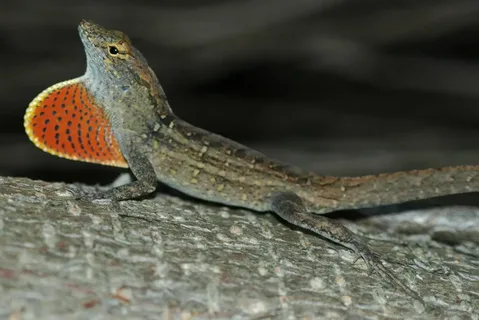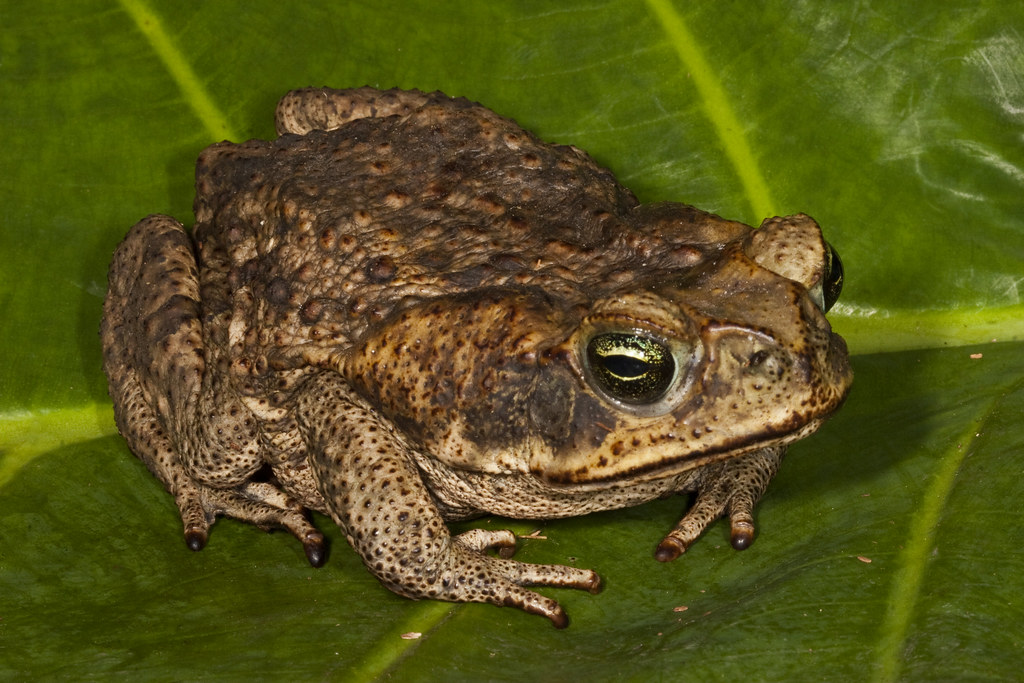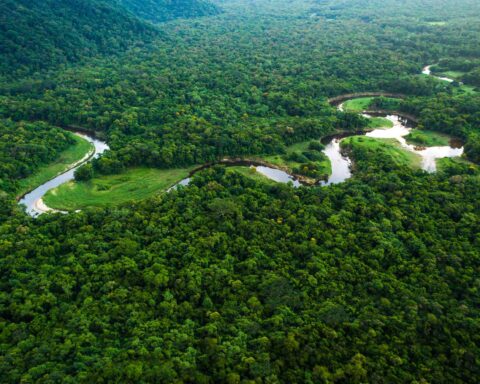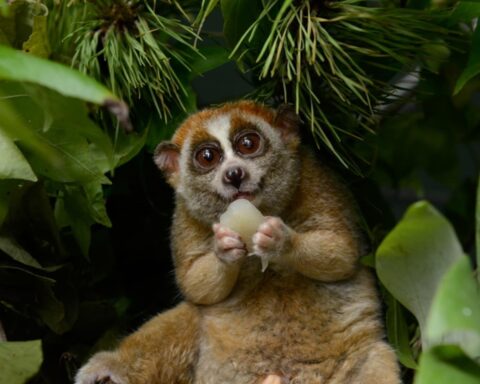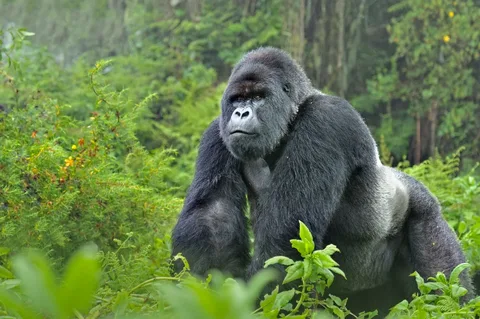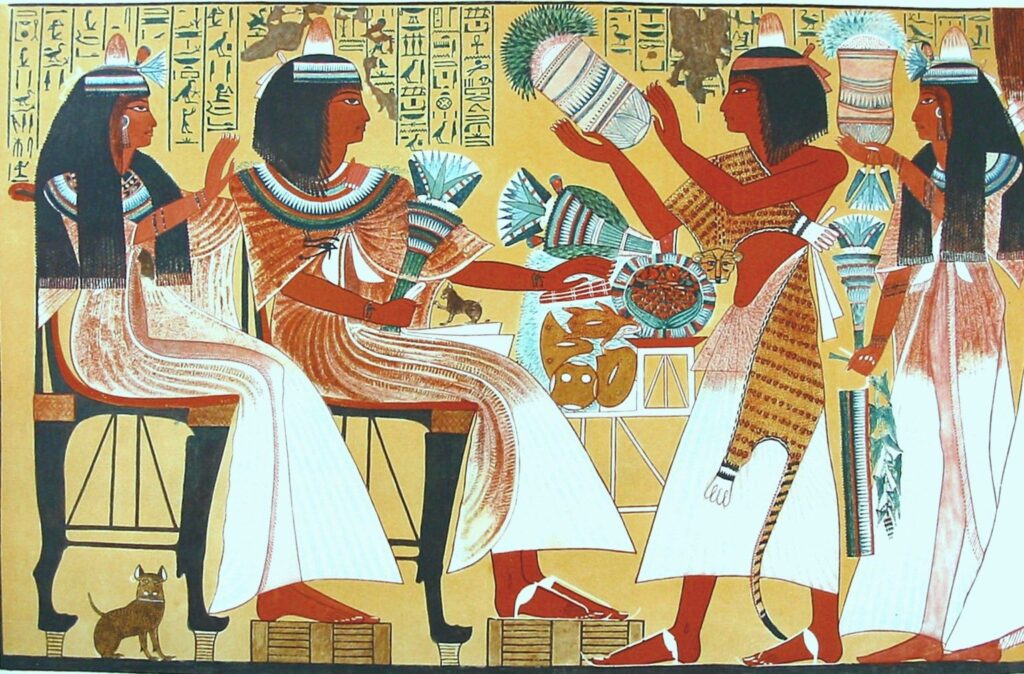Characteristics
Definition
Cold-blooded animals are often misunderstood, as this term can be misleading. The phrase “cold-blooded” implies that these creatures are insensitive or ruthless, but the truth is far from it. In reality, cold-blooded animals are simply ectothermic, meaning their body temperature is regulated by external factors rather than internal processes.
Ectothermic animals, such as reptiles and amphibians, have a lower metabolic rate compared to endothermic (warm-blooded) mammals and birds. As a result, they rely on external sources of heat to maintain their bodily functions. This means that their body temperature varies with the surrounding environment.
During cold temperatures, cold-blooded animals often seek shelter or bask in warm sunlight to raise their body temperature. Conversely, during hot temperatures, they may seek shade or cool water to lower their body temperature. This ability to regulate their temperature through external means is an adaptation that allows them to conserve energy and survive in a wide range of environments.
The term “cold-blooded” was coined by early scientists who mistakenly believed that these animals were insensitive to their surroundings. In reality, ectothermic animals are highly attuned to their environment and have evolved complex behaviors to cope with changing temperatures.
Cold-blooded animals can be found in almost every ecosystem on Earth, from the driest deserts to the deepest oceans. Examples include snakes, lizards, frogs, turtles, crocodiles, and fish. Each of these groups has evolved unique adaptations to survive and thrive in their respective environments.
It’s worth noting that some cold-blooded animals, such as certain species of fish and reptiles, have been known to exhibit endothermic behavior in specific circumstances, such as during intense activity or when seeking mates. However, even in these cases, their primary method of temperature regulation remains external rather than internal.
In conclusion, the term “cold-blooded” is a relic of outdated scientific terminology and can be misleading. Ectothermic animals are not insensitive or ruthless; they are simply highly adapted to survive in a wide range of environments through the use of external heat sources.
Coldblooded animals, also known as ectothermic animals, are those whose internal body temperature is regulated by external sources rather than generated internally through metabolic processes.
Cold-blooded animals, also known as ectothermic animals, are a group of organisms that have evolved to regulate their internal body temperature using external sources rather than generating heat internally through metabolic processes. This means that these animals rely on external factors such as sunlight, water temperature, or substrate to maintain their bodily functions.
The term “cold-blooded” is somewhat misleading, as it implies that these animals are cold in the classical sense. However, this name was given to them because they lack the ability to generate heat internally, unlike warm-blooded (endothermic) animals such as mammals and birds, which can maintain a constant body temperature regardless of environmental conditions.
Cold-blooded animals include reptiles like snakes, lizards, turtles, crocodiles, and alligators. They also encompass amphibians like frogs and toads, fish like salmon and tuna, and insects like bees and butterflies. These organisms are found in various environments, ranging from tropical rainforests to polar regions.
The characteristics of cold-blooded animals include a slower metabolism compared to warm-blooded animals. This is because they conserve energy by not generating excessive heat internally. They also tend to be less active during colder periods and become more active when environmental temperatures rise.
In terms of their physiology, cold-blooded animals have adapted several strategies to regulate their body temperature. For instance, some animals bask in the sun to warm up, while others seek shade or shelter from extreme heat. Some may even exhibit behaviors like digging burrows to maintain a stable body temperature or regulating their activity patterns to coincide with cooler periods.
Cold-blooded animals also exhibit unique physiological and behavioral responses to changes in environmental temperatures. For example, many species undergo diapause, a state of dormancy, during colder months. Some fish will even migrate vertically in the water column to avoid temperature extremes.
Overall, cold-blooded animals have developed fascinating adaptations to cope with their environment. These strategies allow them to survive and thrive in a wide range of conditions, from the freezing tundra to scorching deserts. Their unique physiology has also contributed significantly to our understanding of evolutionary biology and the importance of environmental adaptation.
Temperature Regulation
External Temperature Control
Cold-blooded animals are species that regulate their body temperature using external sources rather than generating heat internally. This is in contrast to warm-blooded animals, which have the ability to maintain a relatively constant body temperature despite changes in their environment.
The term “cold-blooded” can be somewhat misleading, as it implies that these animals are always cold. However, what it actually means is that they are ectothermic, meaning that their body temperature is determined by external factors such as the temperature of their surroundings, sunlight, or water.
Examples of cold-blooded animals include reptiles, amphibians, fish, and insects. These species have evolved to conserve energy and live in a variety of environments, often where food may be scarce or unpredictable.
To regulate their body temperature, cold-blooded animals often rely on external sources such as sunlight, warm rocks, or water. For example, a reptile like a lizard may bask in the sun to warm up after a night in a cool environment, while a fish may swim near a coral reef to take advantage of the warmer waters.
Cold-blooded animals have several adaptations that enable them to thrive in their environments, such as slow metabolisms and specialized circulatory systems. They also often have unique behaviors, like hibernation or dormancy, which help them conserve energy during periods of food scarcity or extreme temperatures.
The term “cold-blooded” can sometimes be used interchangeably with “poikilothermic,” which specifically refers to animals that have a variable body temperature and are unable to maintain it at a constant level. However, some sources argue that the term “cold-blooded” is outdated and should be avoided in scientific contexts.
Despite its potential drawbacks, the concept of cold-bloodedness remains an important aspect of animal biology and ecology. By understanding how different species regulate their body temperature, researchers can gain insights into their evolutionary adaptations, behavioral responses to environmental changes, and ecological roles within their ecosystems.
These animals rely on the environment to regulate their body temperature, which can lead to fluctuations in bodily functions and efficiency depending on the temperature of their surroundings.
- Cold-blooded animals are those that rely on external sources, such as sunlight or water, to regulate their body temperature.
- This group includes animals like reptiles, amphibians, fish, and some species of insects.
- These animals cannot produce heat internally, unlike warm-blooded animals, which have a metabolic system that allows them to maintain a constant internal temperature.
- The term “cold-blooded” is somewhat misleading, as it suggests that these animals are insensitive to temperature changes.
- In reality, cold-blooded animals are highly responsive to their environment and can exhibit dramatic changes in behavior, physiology, and metabolism in response to temperature fluctuations.
- For example, a cold-blooded animal like a snake may be sluggish and inactive on a cool day but become active and energetic when the sun comes out.
Some common characteristics of cold-blooded animals include:
- They have a slower metabolism than warm-blooded animals
- Their heart rate, breathing rate, and other bodily functions are influenced by temperature changes
- They often go into a state of dormancy or torpor during periods of extreme cold or heat
- Their activity levels and behavior can be significantly impacted by seasonal changes in temperature and daylight
- The impact of temperature on cold-blooded animals is not always negative. In fact, many species rely on specific temperature ranges to survive and thrive.
- For example, some species of turtles migrate long distances each year to reach specific temperatures for breeding or feeding.
- Certain types of fish only reproduce in the warmer months, while other species are found in areas with stable, year-round temperatures.
- In summary, cold-blooded animals rely on their environment to regulate their body temperature, which can lead to fluctuations in bodily functions and efficiency depending on the temperature of their surroundings.
- They exhibit a range of adaptations that allow them to cope with temperature changes, from dormancy and migration to changes in behavior and physiology.
- Understanding these adaptations is essential for conservation efforts and managing ecosystems where cold-blooded animals live.
Examples
Cold-blooded animals are organisms whose internal body temperature varies according to the temperature of their surroundings, meaning it is regulated by external factors rather than internal processes. This characteristic is commonly found in reptiles and amphibians, such as snakes, lizards, frogs, and toads.
These animals require an external source of heat, like sunlight or a warm rock, to maintain their body temperature when they are cold, and can overheat if the environment becomes too hot. This adaptation is often seen in desert-dwelling creatures that need to conserve energy, as it allows them to bask in the sun during the day and seek shelter at night.
Some examples of cold-blooded animals include:
- Snakes, such as cobras, vipers, and rattlesnakes, that slither through deserts and forests to hunt for small prey
- Lizards, including geckos, anoles, and iguanas, that bask in the sun on rocky outcroppings or in dry riverbeds
- Frogs and toads, like American bullfrogs and cane toads, that live in ponds, lakes, and wetlands
- Turtles and tortoises, such as box turtles and red-eared sliders, that inhabit rivers, streams, and coastal areas
It’s worth noting that while these animals are often referred to as “cold-blooded,” this term is somewhat misleading. The more accurate description of their thermoregulation process is ectothermic, meaning they regulate their body temperature using external sources, such as the sun or a warm rock.
Reptiles such as snakes, lizards, and turtles are common examples of coldblooded animals that regulate their internal temperature based on external conditions.
Cold-blooded animals, also known as ectothermic animals, are those that rely on external sources of heat to regulate their body temperature. This is in contrast to warm-blooded animals, or endotherms, which generate heat internally and maintain a relatively constant body temperature.
Reptiles, such as snakes, lizards, and turtles, are common examples of cold-blooded animals. These creatures have a slower metabolic rate than mammals and birds, which means they do not need to constantly burn energy to stay warm. Instead, they rely on the sun’s heat or external sources of warmth to increase their body temperature.
The terms “cold-blooded” and “warm-blooded” can be somewhat misleading, as these animals are not necessarily cold or hot at all times. In fact, reptiles like snakes and lizards can regulate their body temperature by basking in the sun or seeking shade, allowing them to maintain a relatively stable internal temperature.
The regulation of internal temperature is crucial for many biological processes in cold-blooded animals. For example, enzymes and metabolic reactions function optimally within specific temperature ranges, so ectothermic animals must carefully manage their body temperature to support these processes.
Despite their slower metabolism, cold-blooded animals are often highly efficient and adaptable, with some species able to survive in extreme environments like deserts or the frozen tundra. For example, turtles have been known to hibernate during periods of harsh weather, allowing them to conserve energy and wait for more favorable conditions.
It’s worth noting that not all cold-blooded animals are reptiles – amphibians, such as frogs and toads, are also ectothermic. However, reptiles like snakes, lizards, and turtles are some of the most well-known examples of cold-blooded animals due to their unique adaptations and ability to thrive in a wide range of environments.
In conclusion, cold-blooded animals are those that rely on external sources of heat to regulate their body temperature. Reptiles like snakes, lizards, and turtles are common examples of ectothermic animals, which have developed remarkable strategies for managing internal temperature and thriving in diverse ecosystems.
Metabolic Rate
Variable Metabolism
Cold-blooded animals, also known as ectothermic organisms, are those that rely on external sources of heat to regulate their body temperature. This means that they do not have the ability to generate heat internally like mammals and birds, which are endothermic or “warm-blooded” animals.
The term “cold-blooded” is somewhat misleading, as it implies that these animals are always cold. In reality, some ectothermic organisms can be quite warm, especially when they are active and engaged in physical activity such as hunting for food or escaping from predators.
Examples of cold-blooded animals include reptiles like snakes, lizards, turtles, and crocodiles, amphibians like frogs and toads, fish, and some types of insects like bees and butterflies. These animals are found in a variety of environments, including tropical rainforests, deserts, oceans, and freshwater habitats.
Cold-blooded animals have several adaptations that help them regulate their body temperature, including seeking out warm or sunny spots to bask in, burrowing underground to escape cold temperatures, and becoming active at night when it is cooler. They also have a slower metabolic rate than endothermic animals, which means they do not need as much energy to maintain their body functions.
One of the key factors that determine an animal’s ability to be ectothermic or endothermic is its size and scale. Smaller animals tend to be more efficient at regulating their temperature using external sources, whereas larger animals require a higher metabolic rate to generate heat internally. This is why mammals like elephants are much more energetic than reptiles of similar sizes.
Variable metabolism in cold-blooded animals refers to the changes in their metabolic rate in response to different temperatures and environments. When they are exposed to warmer temperatures, their metabolism increases to help them maintain a stable body temperature, whereas when they are exposed to cooler temperatures, their metabolism decreases to conserve energy and avoid heat loss.
This adaptive strategy allows cold-blooded animals to survive and thrive in a wide range of environments, from the scorching hot deserts to the icy cold tundra. However, it also means that they are often at the mercy of external temperature fluctuations, which can have significant impacts on their behavior, physiology, and population dynamics.
Researchers studying variable metabolism in cold-blooded animals seek to understand how these organisms adapt to changing environmental conditions, how this affects their ecology and evolution, and what insights this provides into the fundamental biology of life. By exploring the complex relationships between temperature, metabolic rate, and behavior in ectothermic organisms, scientists can gain a deeper appreciation for the intricate web of interactions that governs our planet’s diverse ecosystems.
Coldblooded animals have a lower metabolic rate compared to warmblooded animals, which means they require less energy for basic bodily functions.
Cold-blooded animals, also known as ectothermic animals, are organisms whose body temperature varies according to the temperature of their environment.
Unlike warm-blooded animals, which can regulate their own body temperature through metabolic processes, cold-blooded animals rely on external sources of heat to maintain their bodily functions.
This means that their metabolism is slower compared to warm-blooded animals, and they require less energy for basic activities such as breathing, eating, and reproducing.
The reason for this lower metabolic rate in cold-blooded animals lies in their body structure. They have a simpler nervous system and a slower heart rate, which allows them to conserve energy while still carrying out essential functions.
Examples of cold-blooded animals include reptiles such as snakes, lizards, and turtles, as well as amphibians like frogs and toads.
Another key characteristic of cold-blooded animals is their ability to enter a state of dormancy or torpor when the environment becomes unfavorable for survival.
This allows them to conserve energy during periods of food scarcity or extreme temperatures, increasing their chances of survival in environments where resources may be limited.
In comparison, warm-blooded animals such as mammals and birds have higher metabolic rates due to the complexity of their nervous systems and the need to regulate their body temperature through constant physiological activity.
This higher energy expenditure enables them to maintain a more constant body temperature, even in changing environmental conditions, but it also means they require more food and oxygen to sustain their bodily functions.
Adaptation Strategies
Cold-blooded animals, also known as ectothermic animals, are organisms that rely on external sources to regulate their body temperature. Unlike mammals and birds, which have a constant body temperature regulated by internal mechanisms, cold-blooded animals absorb heat from the environment.
This adaptation strategy is essential for the survival of cold-blooded animals, particularly in environments with extreme temperatures or limited resources. They often bask in sunlight to warm up, seek shade to cool down, or move to areas with more favorable temperature conditions.
Cold-blooded animals are found in various habitats around the world, including forests, deserts, oceans, and freshwater ecosystems. They exhibit a wide range of body shapes, sizes, and behaviors, reflecting their diverse ecological niches and adaptations for survival.
Some common examples of cold-blooded animals include reptiles, such as snakes, lizards, turtles, and crocodiles; amphibians, like frogs and toads; fish, including various species of salmon and sharks; and insects, which can be found in almost every habitat on Earth.
Cold-blooded animals often exhibit specific behaviors that help them regulate their body temperature and conserve energy. These strategies may include:
Torpor: a state of reduced metabolic activity and lowered body temperature to conserve energy during periods of food scarcity or harsh weather conditions;
Migration: moving to areas with more favorable temperatures, such as during seasonal changes;
Hibernation: entering a state of dormancy during winter months to survive the cold temperatures;
Behavioral adaptations, such as altering activity patterns or seeking shelter during extreme temperature events.
These strategies demonstrate the remarkable ability of cold-blooded animals to adapt to changing environments and ensure their survival in diverse ecosystems worldwide.
To adapt to changing environmental conditions, some coldblooded animals may estivate during periods of extreme heat or hibernate during colder months.
Cold-blooded animals, also known as ectothermic organisms, are a group of living creatures that regulate their body temperature using external sources, rather than generating heat internally. This means that their body temperature varies according to the surrounding environment.
The terms “cold-blooded” and “ectothermic” can be somewhat misleading, as these animals are not necessarily cold-blooded in the sense that they have a low body temperature. Instead, their body temperature is influenced by the temperature of their surroundings.
Cold-blooded animals include reptiles, such as snakes, lizards, and turtles, as well as amphibians, like frogs and toads, fish, and some invertebrates, like insects and worms.
To adapt to changing environmental conditions, these animals have evolved various strategies to cope with temperature fluctuations. One of the key adaptations is hibernation, which allows them to conserve energy during periods of food scarcity or harsh weather conditions.
Hibernation is a state of inactivity and reduced metabolism that some cold-blooded animals enter during winter months when temperatures are extremely low. During this period, their heart rate slows down, and they may not eat or drink anything for several months.
Another adaptation used by some cold-blooded animals is estivation, which is a state of dormancy similar to hibernation but occurs during periods of extreme heat or drought. This allows them to conserve energy and protect themselves from the harsh environmental conditions.
In addition to hibernation and estivation, some cold-blooded animals may also exhibit brumation, which is a state of dormancy characterized by a reduction in activity and metabolic rate, but not as extreme as true hibernation.
The specific strategies used by cold-blooded animals depend on their species, habitat, and environmental conditions. For example, some reptiles may estivate during the summer months to avoid high temperatures, while others may hibernate during the winter months to survive harsh weather conditions.
Numerical Representation
Cold-Blooded Animal Populations
Cold-blooded animals are those that regulate their body temperature using external sources, such as the sun or a warm environment, rather than generating heat internally like humans do.
This category includes reptiles, amphibians, and fish, which are unable to maintain a constant body temperature despite changes in their surroundings.
The term “cold-blooded” is somewhat misleading, as these animals can still be quite hot – even scorching – when they’re active or basking in the sun.
However, their metabolism and activity levels tend to slow down at cooler temperatures, which sets them apart from mammals and birds that are considered “warm-blooded.”
Cold-blooded animals have evolved unique strategies to cope with changing temperatures, such as brumation (a state of inactivity and lowered metabolism during periods of food scarcity or harsh weather) and hibernation-like states.
These adaptations help them conserve energy and survive in environments where food is scarce or unreliable.
Reptiles, for instance, often bask in the sun to warm up before becoming active, while amphibians may sequester themselves in moist microhabitats to maintain a stable body temperature.
Some cold-blooded animals have even developed remarkable physiological and behavioral adjustments to deal with extreme temperatures – such as freezing tolerance in some fish or desert-dwelling species.
These adaptations are often the result of thousands of years of evolutionary pressure, where natural selection has favored individuals that can thrive in a particular environment.
Understanding cold-blooded animal populations is essential for developing effective conservation strategies and managing ecosystems under changing environmental conditions.
By studying their biology, behavior, and ecology, scientists can better predict how these species will respond to climate change and develop targeted interventions to mitigate the impacts of warming temperatures.
This knowledge also informs our understanding of the intricate relationships between cold-blooded animals, their habitats, and other organisms within ecosystems – highlighting the interconnectedness of life on Earth and the importance of preserving biodiversity.
Coldblooded animals can be found in various ecosystems worldwide and are often adapted to specific habitats.
Cold-blooded animals, also known as ectothermic animals, are organisms that regulate their body temperature using external sources, such as the sun or a warm rock, rather than generating heat internally. These animals are found in various ecosystems worldwide and are often adapted to specific habitats.
Some common characteristics of cold-blooded animals include:
- Absence of insulating body fat, which allows them to lose heat quickly
- Presence of a three-chambered or four-chambered heart, which helps to conserve energy and reduce metabolic rate
- Slow metabolism compared to warm-blooded animals, such as mammals and birds
- Absence of sweat glands or other mechanisms for regulating body temperature
- Often, cold-blooded animals are active at night and rest during the day to avoid overheating
Cold-blooded animals can be found in various ecosystems worldwide, including:
- Tropical rainforests: many species of frogs, lizards, and snakes inhabit these regions
- Deserts: cold-blooded animals such as snakes, lizards, and tortoises are well adapted to the hot and dry conditions
- Coral reefs: fish, sea turtles, and other marine animals that live among coral formations are ectothermic
- Arctic tundra: cold-blooded animals such as reindeer, arctic foxes, and polar bears have adapted to the extreme cold
The unique characteristics of cold-blooded animals allow them to thrive in a wide range of ecosystems, from the hottest deserts to the coldest tundras. Their adaptations enable them to survive in environments where other, warm-blooded animals would perish.
Prevalence in Nature
Prevalence in nature refers to the widespread distribution or occurrence of certain characteristics, traits, or phenomena among living organisms or within specific ecosystems. In this context, we’re going to delve into the concept of cold-blooded animals and explore their fascinating world.
Cold-blooded animals, also known as ectothermic animals, are those whose internal body temperature is regulated by external sources rather than internally generated heat. This means that their bodily functions and metabolic rates are directly influenced by the surrounding environment’s temperature.
Contrary to popular misconception, being “cold-blooded” doesn’t imply that these animals are insensitive to cold temperatures or incapable of regulating their body temperature. Instead, they rely on external sources such as sunlight, warm rocks, or water to regulate their internal temperature, which is essential for their survival and optimal functioning.
The prevalence of cold-blooded animals in nature is astounding, with various species found in diverse environments worldwide. From the scorching deserts to the freezing tundra, these organisms have adapted to thrive in a wide range of conditions.
Some examples of cold-blooded animals include reptiles such as snakes, lizards, and turtles; amphibians like frogs and toads; fish; and insects like butterflies and dragonflies. These groups exhibit incredible diversity and resilience, with many species capable of surviving in environments where others would perish.
The prevalence of cold-blooded animals has significant ecological implications. As ectothermic organisms, they occupy specific niches within ecosystems, playing crucial roles as predators, prey, or decomposers. Their populations and behaviors can have cascading effects on the surrounding environment, influencing nutrient cycles, energy flow, and even the structure of entire communities.
Understanding the prevalence of cold-blooded animals in nature also highlights our responsibility to protect these vital components of ecosystems. As we face climate change, habitat destruction, and other environmental challenges, it’s essential to recognize the importance of preserving biodiversity, including that of ectothermic species.
In conclusion, the prevalence of cold-blooded animals in nature is a testament to their adaptability and resilience in a wide range of environments. As we continue to explore and learn about these fascinating organisms, it’s crucial that we acknowledge our place within the natural world and work towards preserving the delicate balance of ecosystems for future generations.
Their populations play a crucial role in maintaining ecological balance, serving as both predators and prey in their respective food chains.
Cold-blooded animals, also known as ectothermic animals, are organisms that regulate their body temperature using external sources such as the sun or a warm rock. This is in contrast to endothermic animals, which generate heat internally.
There are several characteristics of cold-blooded animals:
- Their metabolic rate slows down at lower temperatures, allowing them to conserve energy during periods of food scarcity.
- Their physical activity is often limited by the temperature of their environment, with some species becoming sluggish in colder temperatures.
- They rely on external sources of heat to regulate their body temperature, rather than generating heat internally.
Cold-blooded animals can be found in a variety of environments, including:
- Tropical rainforests and deserts
- Freshwater lakes and rivers
- Coral reefs
- The Arctic tundra
Examples of cold-blooded animals include:
- Reptiles, such as snakes, lizards, and turtles.
- Amphibians, such as frogs and toads.
- Fish, especially those found in temperate or tropical waters.
Cold-blooded animals play a crucial role in maintaining ecological balance. As both predators and prey, they serve as a vital link in the food chain, helping to regulate populations of other species. For example:
- Turtles feed on algae and help keep aquatic ecosystems clean.
- Fish are prey for larger animals such as birds, mammals, and other fish.
- Reptiles, like snakes and lizards, serve as both predators and prey in their respective food chains.
In summary, cold-blooded animals are organisms that regulate their body temperature using external sources. They can be found in a variety of environments and play a crucial role in maintaining ecological balance by serving as both predators and prey in the food chain.
Ecological Role
Predation and Prey Cycle
In the grand tapestry of nature, predation plays a vital role in maintaining the delicate balance between species. The dynamic relationship between predators and their prey is often referred to as the “predation cycle,” where both parties play an essential part in shaping each other’s existence.
Predators are organisms that obtain their food by hunting and capturing other animals. These predators can be either vertebrates, like birds of prey or mammals such as lions, or invertebrates, including insects like spiders or scorpions. Predators come in various shapes and sizes, but their common goal is to secure a source of sustenance to sustain life.
On the other hand, prey are organisms that are being hunted by predators for food. Prey can also be vertebrates, such as deer, rabbits, or birds, or invertebrates like fish, insects, or worms. The prey species has evolved various defense mechanisms to evade predation and protect themselves from becoming someone else’s meal.
One of the crucial aspects of the predation cycle is the concept of cold-blooded animals. Cold-blooded animals are those whose body temperature is regulated by external factors such as the environment rather than internally generated heat. This group includes reptiles, amphibians, and fish, which often exhibit slow metabolism rates.
Reptiles, including snakes, lizards, turtles, and crocodilians, are ectothermic animals, meaning their body temperature is controlled by external factors like solar radiation or water temperature. They have developed remarkable adaptations to survive in various environments, such as camouflage, venom, or sharp claws to defend against predators.
Ambibians, which include frogs, salamanders, and caecilians, also belong to the group of cold-blooded animals. These creatures have a semi-aquatic lifestyle, with some species being aquatic and others living on land. They use their permeable skin as an interface for gas exchange and water absorption, which helps regulate their body temperature.
Fish are another example of cold-blooded animals that inhabit both freshwater and marine environments. Their body temperature is largely regulated by the surrounding water temperature, affecting their metabolic rate, growth rates, and behavior. Many fish species have developed unique adaptations to cope with changing environmental conditions, such as thermoregulation or migration patterns.
The predation cycle involving cold-blooded animals can be complex due to factors like seasonal changes, food availability, and competition among predators. For example, during periods of drought, reptiles may congregate around water sources, increasing the likelihood of encounters with other predators like birds of prey or carnivorous mammals. This delicate interplay between predator and prey demonstrates the intricate relationships within ecosystems.
Key aspects of the predation cycle involving cold-blooded animals include:
- Predator-prey dynamics: The reciprocal interactions between predators and their cold-blooded prey, where each species influences the other’s survival, behavior, and population structure.
- Thermoregulation: Cold-blooded animals rely on external factors to regulate body temperature, affecting their metabolism, growth rates, and behavioral patterns in response to environmental changes.
- Adaptations for survival: The evolution of unique features among cold-blooded animals, such as camouflage, venom, sharp claws, or specific life cycles (e.g., diapause), allowing them to cope with diverse environments and predators.
- Population regulation: Predation pressure and competition among prey species can influence population dynamics and shape the ecological landscape in various ecosystems.
Ultimately, understanding the intricate relationships between predators, cold-blooded animals, and their environment is essential for grasping the fundamental principles of ecology. This complex interplay highlights the significance of each component within a given ecosystem, ultimately illustrating how all species play vital roles in shaping the delicate balance of nature.
Coldblooded animals are integral components of their ecosystems, participating in the predationprey cycle that maintains biodiversity.
Cold-blooded animals, also known as ectotherms, are organisms that rely on external sources of heat to regulate their body temperature. This contrasts with warm-blooded animals, or endotherms, which generate heat internally through metabolic processes. The most well-known examples of cold-blooded animals include reptiles, amphibians, and fish.
These animals are integral components of their ecosystems due to the critical roles they play in maintaining a balance between predators and prey. In many cases, the predator-prey dynamics that occur among cold-blooded animals serve as a regulatory mechanism for population sizes. For example, carnivorous snakes will feed on herbivorous lizards, controlling the lizard’s population growth. Similarly, large predatory fish regulate the populations of smaller fish species by hunting them.
The predation-prey cycle also serves to maintain ecosystem diversity by preventing any single species from dominating the environment. If a particular species becomes too abundant, it may overgraze vegetation or consume too many resources, leading to an imbalance in the ecosystem. Predators and prey help regulate each other’s populations, thereby preserving the delicate balance required for biodiversity.
In addition to their roles as predators and prey, cold-blooded animals also serve as food sources for other organisms in their ecosystems. This is particularly evident in aquatic ecosystems, where fish and other marine animals are an important component of the food chain. The role that these animals play in transferring energy through their ecosystem highlights the significance of maintaining a healthy population of predators and prey.
Furthermore, cold-blooded animals contribute to ecosystem processes such as nutrient cycling. Many species of reptiles and amphibians have unique digestive systems that enable them to break down organic matter into its constituent nutrients. By consuming insects and other small organisms, these animals help recycle nutrients back into the environment, which are then used by plants and other organisms.
Lastly, cold-blooded animals serve as indicators of ecosystem health. Changes in their populations or distributions can signal broader environmental issues such as pollution, climate change, or habitat destruction. For example, declines in amphibian populations have been linked to environmental stressors like habitat loss and pesticide use, highlighting the importance of monitoring these species for signs of ecosystem degradation.
Habitat Diversity
Habitat diversity refers to the variety of different habitats found within a particular ecosystem or region. This can include a wide range of environments, from tropical rainforests and coral reefs to deserts and Arctic tundras.
Cold-blooded animals, also known as ectothermic animals, are those that regulate their body temperature using external sources rather than generating heat internally like mammals do.
There are many different types of cold-blooded animals, including reptiles, amphibians, fish, and invertebrates such as insects and arachnids. These animals can be found in almost every habitat on Earth, from the driest deserts to the deepest oceans.
Cold-blooded animals have a number of adaptations that enable them to survive in their environments. For example, some species of reptiles and amphibians are able to estivate during periods of drought or cold weather, slowing down their metabolism to conserve energy.
Other examples of cold-blooded animals include crocodiles, which can regulate their body temperature by basking in the sun or seeking shade, and snakes, which use heat-sensitive pits to detect warm-blooded prey.
Habitat diversity is important for cold-blooded animals because it allows them to find suitable environments in which to live and thrive. Different habitats support different types of vegetation and microorganisms, which provide food and shelter for these animals.
The loss of habitat diversity can have serious consequences for cold-blooded animals, including reduced populations and even extinction. Human activities such as deforestation, urbanization, and climate change are major drivers of habitat loss and fragmentation.
They can be found in a wide range of habitats, from terrestrial environments to aquatic ones, highlighting their adaptability to different ecological niches.
Cold-blooded animals, also known as ectothermic animals, are organisms that regulate their body temperature using external sources rather than generating heat internally. This group includes a vast array of species, such as reptiles, amphibians, fish, and invertebrates like insects and worms.
The term “cold-blooded” can be somewhat misleading, as it implies that these animals are always cold or even bloodless. However, this name is derived from the fact that their body temperature fluctuates with the environment, meaning they are not endothermic, which is the characteristic of being able to maintain a relatively constant internal temperature.
Cold-blooded animals can be found in a wide range of habitats, from terrestrial environments to aquatic ones. This adaptability to different ecological niches reflects their ability to survive and thrive in various conditions. For instance:
- Reptiles, such as snakes, lizards, and turtles, can be found on land or in water, with some species able to live in both environments.
- Amphibians, like frogs and toads, typically spend part of their lives in water and the rest on land.
- Fish are exclusively aquatic animals that thrive in oceans, rivers, lakes, and other bodies of water.
- Invertebrates like insects and worms inhabit both terrestrial and aquatic environments, often playing crucial roles in their ecosystems as decomposers or pollinators.
The adaptability of cold-blooded animals is closely tied to their ability to regulate their body temperature using external sources. This means that they can survive in environments where the temperature ranges from near-freezing to extremely hot, depending on the species and its ecological niche.
Some examples of how cold-blooded animals have adapted to different habitats include:
- The desert-dwelling lizard, which seeks shade during the hottest part of the day and becomes active at night when temperatures are cooler.
- The alpine-dwelling fish, which lives in high-altitude lakes and rivers where water temperatures can be quite low, but it still has a higher metabolic rate than fish living in warmer environments.
- The tropical-dwelling snake, which seeks shelter in dark, humid burrows during the hottest part of the day, emerging at night to hunt for prey when the temperature is lower.
These examples illustrate how cold-blooded animals have developed unique strategies to cope with varying environmental conditions. Their ability to adapt to different ecological niches makes them a fascinating group of organisms that continue to be studied by scientists and appreciated by naturalists and conservationists alike.
Conclusion
Summary of Key Points
Cold-blooded animals are also known as ectothermic animals, meaning that their body temperature is regulated by the environment around them. This group includes reptiles, amphibians, fish, and some invertebrates such as insects.
The defining characteristic of cold-blooded animals is their inability to regulate their internal body temperature through metabolic processes alone. Instead, they rely on external sources of heat, such as sunlight or a warm environment, to elevate their body temperature when needed.
Cold-blooded animals often exhibit behaviors that help them conserve energy and maintain a stable body temperature in changing environments. For example, reptiles like snakes and lizards may bask in the sun to warm up before hunting or seeking shelter to regulate their temperature during cold periods.
The unique physiological adaptation of being cold-blooded allows these animals to survive and thrive in diverse habitats worldwide. They can be found in deserts, rainforests, oceans, and even polar regions, where they have evolved specific strategies to cope with the local climate.
Cold-blooded animals also play significant ecological roles as both predators and prey. Many species are essential components of their ecosystems, influencing food chains, population dynamics, and nutrient cycling.
Understanding cold-blooded animals is crucial for appreciating the complexity and diversity of life on Earth. By recognizing their unique characteristics and behaviors, we can better comprehend the intricate relationships between organisms and their environments, ultimately fostering a deeper appreciation for the natural world.
Coldblooded animals are unique due to their temperature regulation mechanism and variable metabolic rate, which is crucial for understanding their ecological roles in diverse ecosystems.
Cold-blooded animals, also known as ectothermic or poikilothermic animals, are those whose body temperature is regulated by external sources, such as the sun, water, or their surroundings.
This contrasts with warm-blooded animals, or endotherms, which can regulate their own body temperature through metabolic processes.
Some examples of cold-blooded animals include reptiles (such as snakes and lizards), amphibians (like frogs and toads), fish, and invertebrates like insects, arachnids, and crustaceans.
Cold-blooded animals have unique temperature regulation mechanisms that allow them to survive in a wide range of environments.
When it’s hot outside, their body temperature can rise to match the surrounding environment, allowing them to conserve energy by not having to produce heat internally.
Conversely, when it gets cold, they may seek out warmer environments or behaviors (like basking in the sun) to raise their body temperature.
The variable metabolic rate of cold-blooded animals is another key feature that sets them apart from warm-blooded ones.
As environmental conditions change, their metabolism adjusts accordingly, which affects their rate of food consumption and energy expenditure.
This dynamic relationship between metabolism and environment allows them to conserve energy during periods when resources are scarce or to take advantage of abundance when it occurs.
In terms of ecological roles, cold-blooded animals play critical functions in diverse ecosystems.
Many serve as primary consumers, feeding on plants and other organisms that help recycle nutrients through the ecosystem.
Others occupy higher trophic levels as predators or prey for larger animals, contributing to the nutrient cycling and energy transfer within their communities.
In aquatic environments, fish and invertebrates like oysters and mussels are foundational species that support entire food webs by filtering water and providing habitat for other organisms.
Reptiles and amphibians serve as both predators and prey, influencing population dynamics within terrestrial ecosystems.
Cold-blooded animals have evolved unique adaptations to their environments that allow them to occupy various ecological niches, underscoring the importance of understanding these roles in maintaining the balance of ecosystems.
- Countries That Start With The Letter M - September 3, 2024
- Countries That Start With The Letter T - September 3, 2024
- Countries That Start With The Letter P - September 3, 2024

